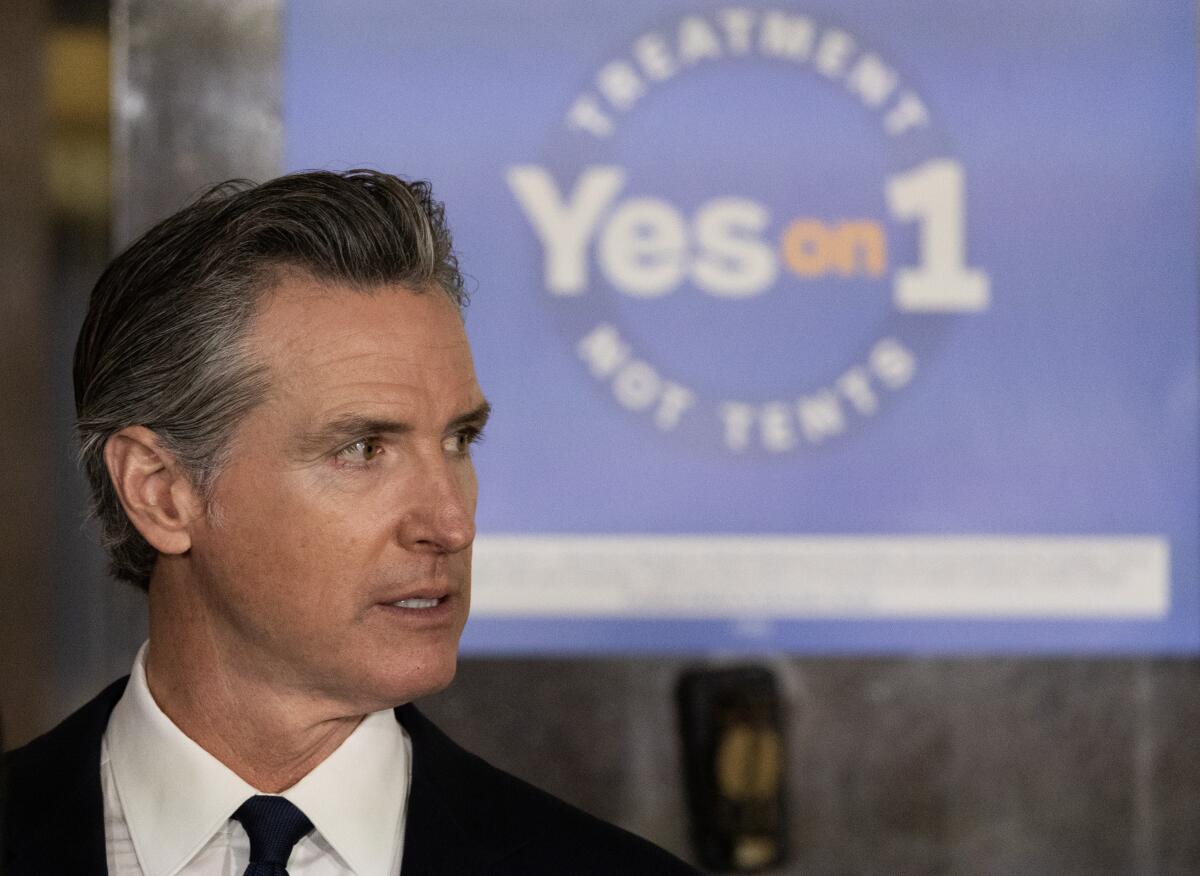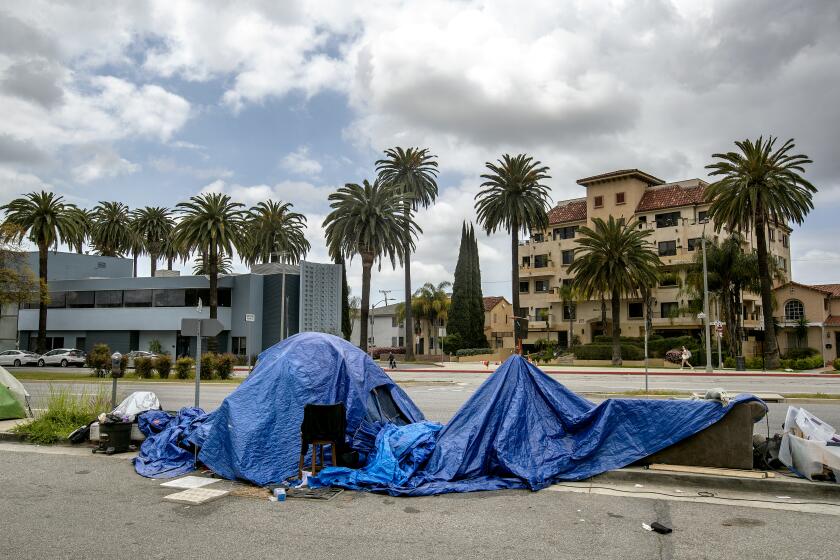Opinion: Californians narrowly passed Proposition 1. Can the state ensure the measure will work?

In a contest so close that it took more than two weeks to call the race, Californians narrowly passed Proposition 1, a $6.4-billion bond measure and reallocation of existing funds to address mental health and homelessness in the state.
Proponents of Proposition 1 say it will create direly needed treatment facilities and housing that can also address the state’s addiction and homelessness crises, including among veterans. Opponents see state funds being diverted from core psychiatric services to housing and facility construction, and a worrisome shift from voluntary to involuntary treatment that will re-create the asylum era, when people were forcibly placed into psychiatric hospitals long-term.
If Proposition 1 is approved by California voters, the bond to build more mental health facilities could cost $14 billion in debt and interest payments.
In truth, the estimated 4,350 housing units to be funded will not make a dent in the homelessness crisis, nor will the estimated 6,800 added treatment beds return us to the psychiatric dark ages. The measure is poised to fund new treatment infrastructure but remains opaque on the type, quality and continuity of care. We should now ask what treatment people will receive in these residential programs and how they will be supported if they move to independent housing.
I study how inequality shapes the psychiatric care that people receive. I have observed everything from street outreach and supportive housing programs for the homeless to exclusive private residential facilities for the rich. When people receive high-quality mental healthcare and social services, whether from a public or private entity, it can fundamentally improve their life trajectories. Yet adding more money and beds doesn’t necessarily mean better care. If we create facilities without a plan to provide effective treatment, we may not just squander this opportunity — we could make things worse.
Jermaine, Jason and John all landed on the streets when they were squeezed between high housing costs and low incomes. What could have kept them in their homes?
Consider the housing-first model, which provides immediate housing and then mental healthcare. Some research indicates that, when implemented correctly, it can lead to long-term housing retention and improved health and addiction outcomes. Yet other research shows huge variation, with residents in poorly run programs experiencing health outcomes no better than those on the streets. I’ve witnessed inspiring care, but I’ve also seen under-resourced providers engage in “tolerant containment”: leaving people alone to use substances and self-destruct on the condition they stay in the provided housing.
For a person in immediate crisis, forced care such as hospitalization and locked residential facilities may well be lifesaving. Yet considerable research also shows that poorly implemented coercion can backfire. Patients describe humiliation and a loss of bodily autonomy. They disengage with treatment as a result and are at an elevated risk of suicide. People may stomach coercion if they are treated with dignity — but too often, they are not. A lot can go wrong, so with billions of dollars at play, it’s important we find what models work best.
Jail is the wrong place for many Angelenos who end up there. The Office of Diversion and Reentry is tackling this problem.
Getting people stable and off the street is obviously a good baseline in the hierarchy of needs, but it is far from enough. Many people benefit from serious programming that continues from residential to independent living, and from having the support of providers who are committed to helping them achieve more than simply staying housed. This only works, of course, if there are resources for providers and opportunities for patients to find meaningful roles in society. Money and thought must go into programming, not merely housing construction. That’s why critics argue that Proposition 1 will do harm by redirecting some funds used for existing mental health programs toward building housing.
When the state takes bids for constructing residential facilities, it should not just be eyeing who can build for the cheapest rate. Rather, officials should look for who can design the right kind of settings for patients. Research shows how the physical layout of hospital wards can drastically alter people’s experience. The state should also be thoughtful about balancing the types of facilities it will create. As sociologist Alex Barnard argues, adding “beds” conflates important distinctions: California may actually have sufficient facilities for psychiatric emergencies, for instance, but not enough longer-term options for people who are almost ready to live on their own again.
My neighbors and I in Venice see the suffering among unhoused members of our community. Many need addiction treatment and mental health care.
Above all, we must listen to patients, who often have untapped expertise in what makes for sound care. Many patient rights groups took a stand against Proposition 1 and warned of the dangers of coercion. Although their voices should have been prioritized from the start, it’s not too late to include their insights in helping craft smart policy choices.
When state officials face a massive homelessness crisis and visible public suffering, they can be preoccupied with speed: build as many facilities as quickly as possible. But if we do not account for what it means to truly support people in their healing and independence, we risk throwing money away.
Poorly delivered care often backfires and can be worse than nothing. We should start delivering the high quality care that Californians deserve — with dignity, choice and promises of a real future — or we’ll end up paying for one more failed reform.
Neil Gong is an assistant professor of sociology at UC San Diego and the author of “Sons, Daughters, and Sidewalk Psychotics: Mental Illness and Homelessness in Los Angeles.”
More to Read
A cure for the common opinion
Get thought-provoking perspectives with our weekly newsletter.
You may occasionally receive promotional content from the Los Angeles Times.














